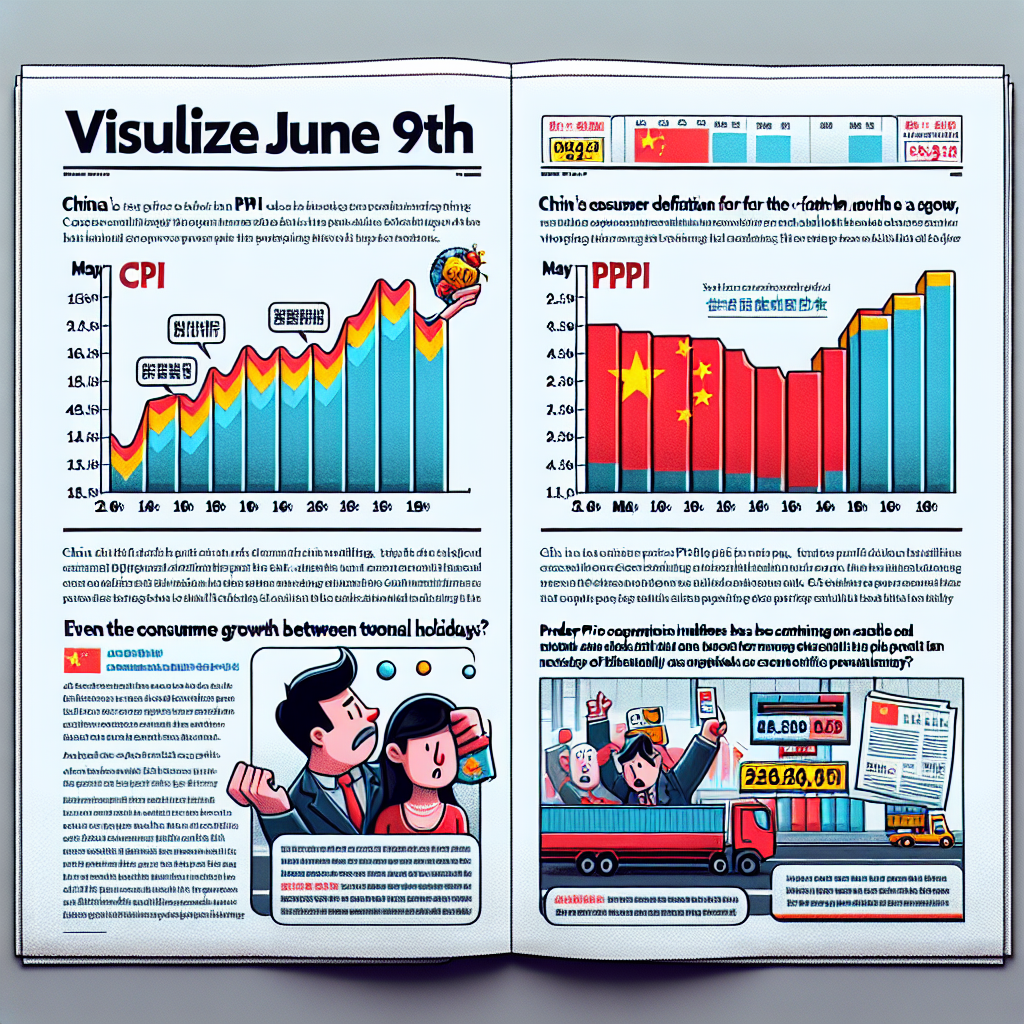On Monday, June 9th, China’s May CPI and PPI data was released, showing that China’s consumer deflation has continued for the fourth consecutive month, with the largest drop in producer price index in nearly two years. The growth in consumption between the two national holidays also failed to offset the drag from weak domestic demand. Economists believe that the deflationary pressure in China currently shows no signs of easing.
According to the National Bureau of Statistics of the Communist Party of China on Monday, May CPI in 2025 dropped by 0.1% year-on-year and 0.2% month-on-month, while PPI dropped by 3.3% year-on-year and 0.4% month-on-month.
Economist Eric Zhu from Bloomberg Economics stated, “The deflationary pressure in China is currently not showing signs of easing… policymakers are implementing budget plans, but resources do not seem to flow to areas that truly benefit consumers. Price wars on goods and services are not helping to improve the situation.”
After the epidemic, China’s economy continues to be weak, with consumers becoming more cautious after experiencing a prolonged slump in the real estate market, and businesses becoming embroiled in price wars. Despite the ongoing U.S.-China trade negotiations, President Trump’s tariffs are reducing the demand for Chinese goods in the U.S., further exacerbating China’s industrial overcapacity and intensifying price wars.
One of the most notable examples of price wars is BYD’s announcement of price cuts of up to 34% on nearly a dozen pure electric and plug-in hybrid models, once again confirming the fierce market competition and raising concerns about a possible wave of price cuts in the electric vehicle market.
Moreover, Trump’s tariffs are also causing job and income losses, further weakening Chinese consumers’ purchasing power and willingness, prompting manufacturers and service providers to lower prices.
Since last year, the Chinese authorities have implemented a subsidy program for “old-for-new” appliances in the hope of boosting sales, but economists warn that this effect will not be sustainable and will harm the sales of other goods.
Leading economists such as Morgan Stanley’s Xing Ziqiang warned last week that they believe China’s deflationary pressure is “intensifying rather than improving.” Economists caution that due to “slowing exports and weak consumer sentiment,” China’s economic growth may rapidly decelerate in the second half of the year.
The International Monetary Fund predicts that China’s average CPI this year will be zero, the lowest among the nearly 200 countries it covers. This would be the lowest inflation rate for China’s economy since the global financial crisis in 2009 severely hit exports.
The latest Purchasing Managers Index survey shows that both manufacturing and service sector output prices are weakening. According to reports released by Caixin and S&P Global last week, the discount rate in the service sector in May reached the highest level in eight months.
A recent survey by Bloomberg of 67 economists also indicates that the deflationary pressure in China is expected to intensify.

